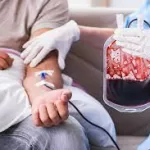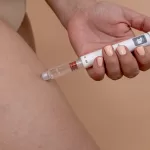CHICAGO, IL – The age-old practice of drawing blood may soon undergo a significant transformation. Northwestern Medicine is among a select group of U.S. health systems participating in a clinical trial of a revolutionary robotic device designed to automate blood collection.
Developed by Netherlands-based Vitestro, the “Aletta” device aims to address the growing shortage of phlebotomists while improving efficiency and patient comfort. “This all ensures high accuracy and high reliability, and with such precision it reduces any pain and discomfort associated with a normal blood draw,” said Bob Gerberich, Vitestro’s chief commercial officer for North America.
The Aletta operates by having the patient place their arm on a designated armrest. After initiating the process, a tourniquet is applied, and the machine uses infrared light and AI-driven doppler ultrasound to locate and select a suitable vein. The device then cleans the area with alcohol, inserts a needle, and collects blood samples into tubes, all while the patient remains shielded from the process. Finally, a bandage is applied.
Vitestro reports a 95% success rate for first-attempt blood draws, and the device has been approved for use in Europe for patients 16 and older. The company plans to seek FDA approval for commercial use in the U.S.
Northwestern Medicine is one of three U.S. sites participating in the multi-center clinical trial, with the Aletta expected to arrive next year. The trials will allow Vitestro to gather data on the device’s performance in the U.S. and collect valuable feedback from healthcare providers.
Dr. Gregory Retzinger, medical director of Pathology Clinical Services at Northwestern Memorial Hospital, expressed optimism about the device’s potential to alleviate the strain caused by phlebotomist shortages. “We don’t have enough people to draw the blood, so I had to look for a solution,” he said.
The U.S. Bureau of Labor Statistics projects an 8% growth in phlebotomist employment between 2023 and 2033, indicating a continued demand for these professionals. However, the availability of robotic solutions like the Aletta could significantly impact the future of blood collection.
Vitestro also highlights the device’s near-zero hemolysis rate, a common issue in traditional blood draws that can render samples unusable. The company believes the Aletta will improve sample quality and overall patient experience.
While the commercial cost of the Aletta is yet to be determined, Vitestro anticipates that the device will offer cost savings for health systems and improve patient access by enabling faster and more efficient blood draws.
“The main purpose of the device is really to enhance the quality of the samples and improve the patient experience,” said Toon Overbeeke, CEO and co-founder of Vitestro.
Disclaimer: This news article is based on information provided and should not be interpreted as medical advice. The clinical trial of the Aletta device is ongoing, and its effectiveness and safety are still being evaluated. The information presented here reflects the current state of the trial and may be subject to change. Readers should consult with healthcare professionals for any health-related concerns. The mention of specific companies or products does not constitute an endorsement.












